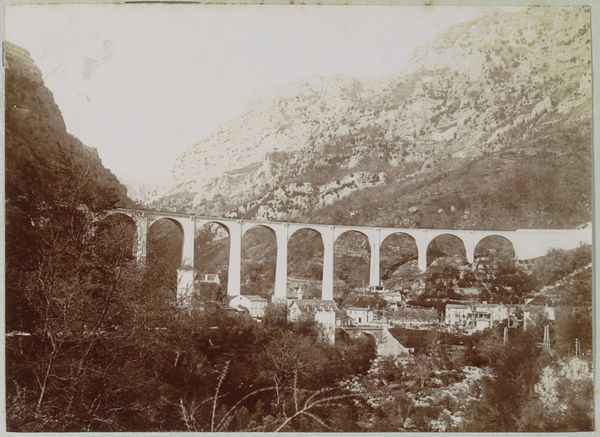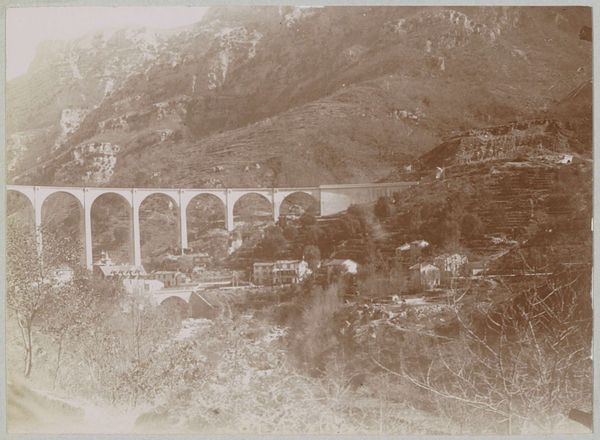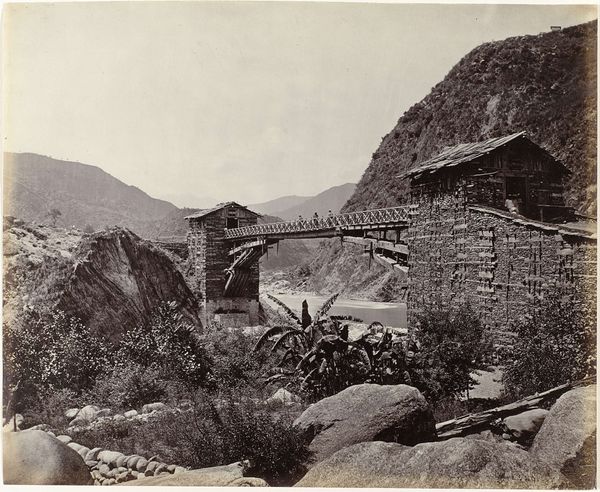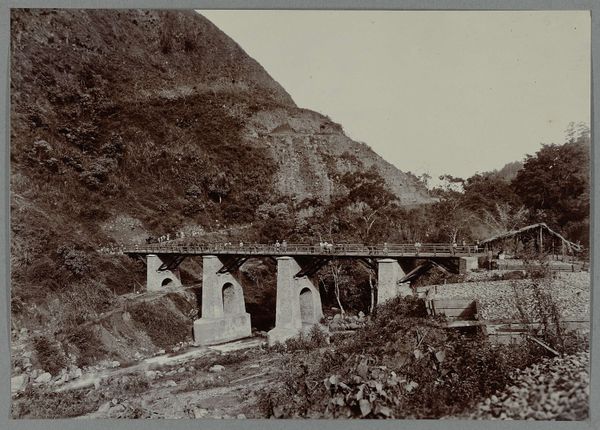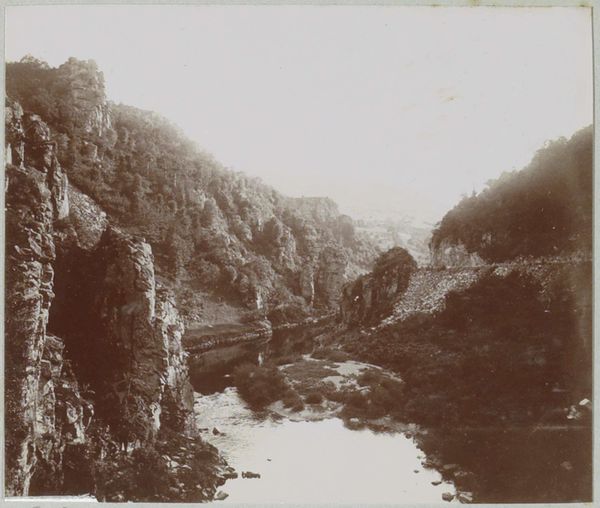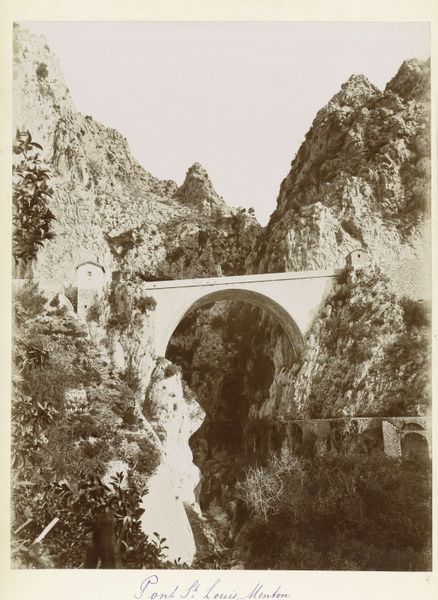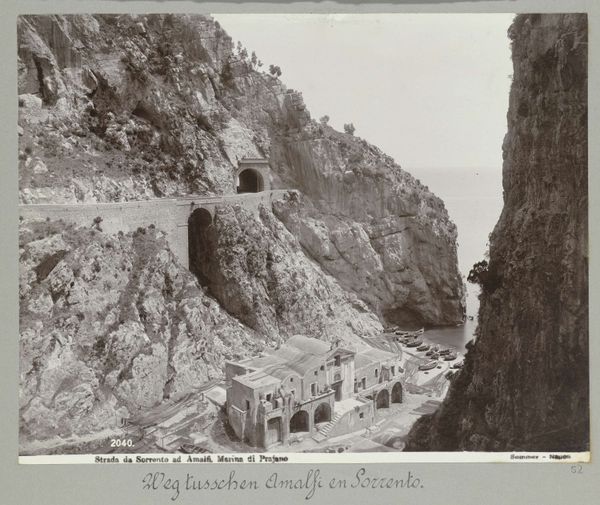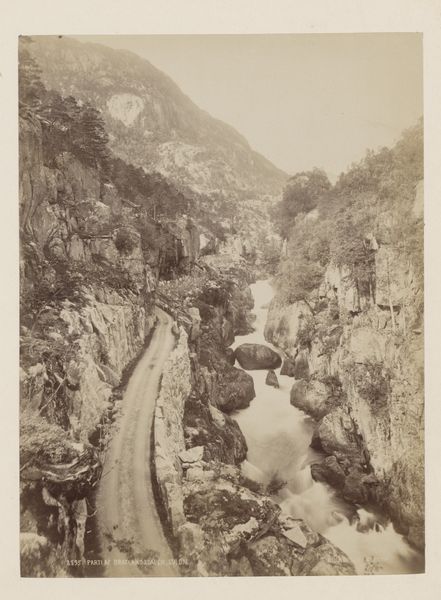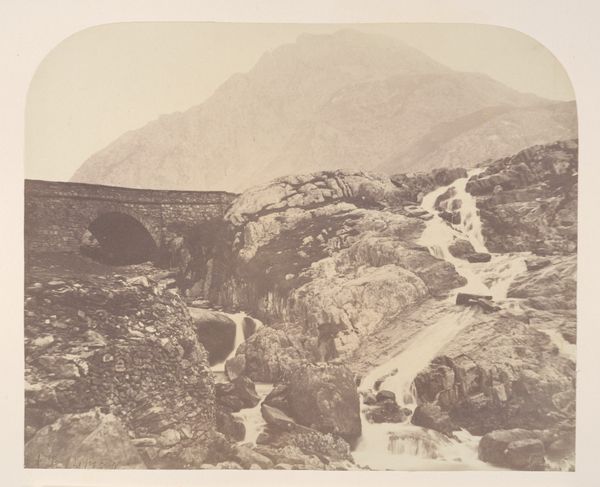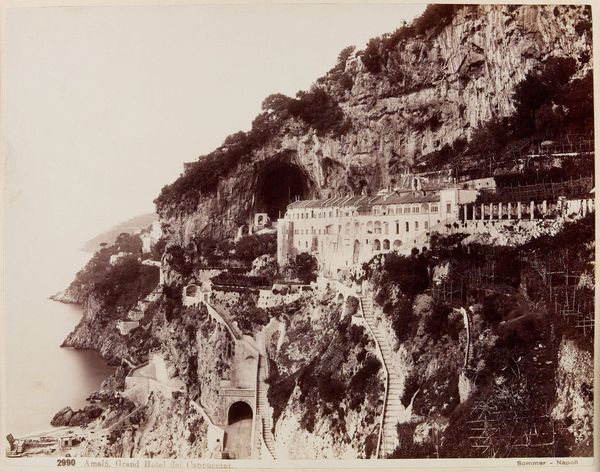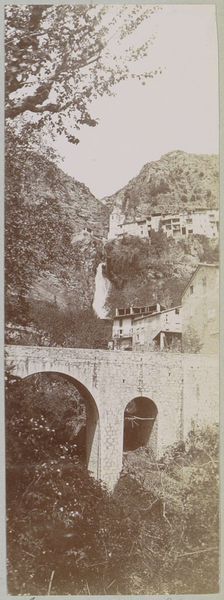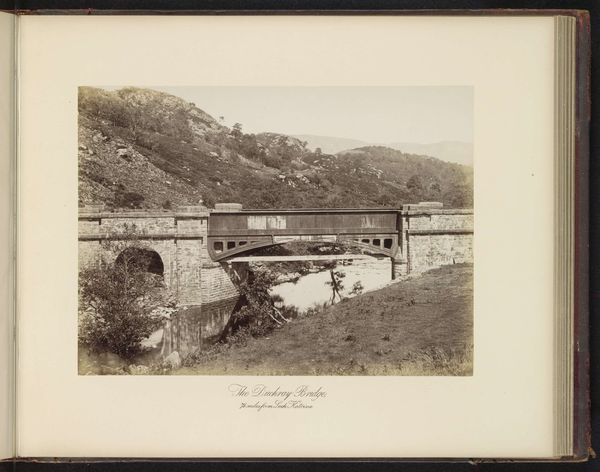
print, plein-air, photography
# print
#
plein-air
#
landscape
#
photography
#
cityscape
#
realism
Dimensions: height 80 mm, width 109 mm
Copyright: Rijks Museum: Open Domain
Curator: Delizy’s photograph, “Viaduct bij Pont du Loup,” taken in 1903, showcases a captivating blend of engineering and natural landscape, captured in a warm, sepia-toned print now residing in the Rijksmuseum. Editor: It's quite striking. The massive bridge against the towering mountain—almost like a human attempt to tame, or at least, co-exist with something much grander. The tones really evoke a sense of bygone era, but the composition, it's all about power, isn't it? Curator: Indeed. Consider the photographic processes of the era. Images like these required meticulous planning, from location scouting in plein air to understanding the chemical processes crucial for a clear, detailed print. Photography, especially outdoors, was far from an instantaneous act; it demanded a specific skill. Editor: Which also implies access, doesn't it? Who had the resources, the time, and therefore, the power to frame and represent this landscape? The viaduct itself speaks to colonial and industrial ambition, doesn't it? Pushing infrastructure into even the most formidable environments. Curator: Precisely. The viaduct isn't merely a bridge; it symbolizes technological advancement altering the environment. This realist photography provides information, showing how societal progress was materializing geographically. It allows viewers a glimpse into both social context and material accomplishment. Editor: Right, but who benefits from this advancement? And what's the impact on the local communities? How did they negotiate a life in the shadow of such enormous progress, literally overshadowed by this imposing bridge and its implication of social class division? It's about more than technical achievement; it's a visual narrative about power structures and societal transformation. Curator: True, and photography is a mode of communication of labor, and materiality intersecting to illustrate society. It freezes progress in a visible material state, allowing insight. Editor: So the art piece functions as documentation as well as evidence of cultural norms. Food for thought on who controls those narratives, and the social repercussions of those visual decisions. Curator: It surely highlights those ever-present concerns about materiality in society, doesn’t it? Editor: It really does, allowing insight of photographic impact to become thought-provoking cultural conversation.
Comments
No comments
Be the first to comment and join the conversation on the ultimate creative platform.
